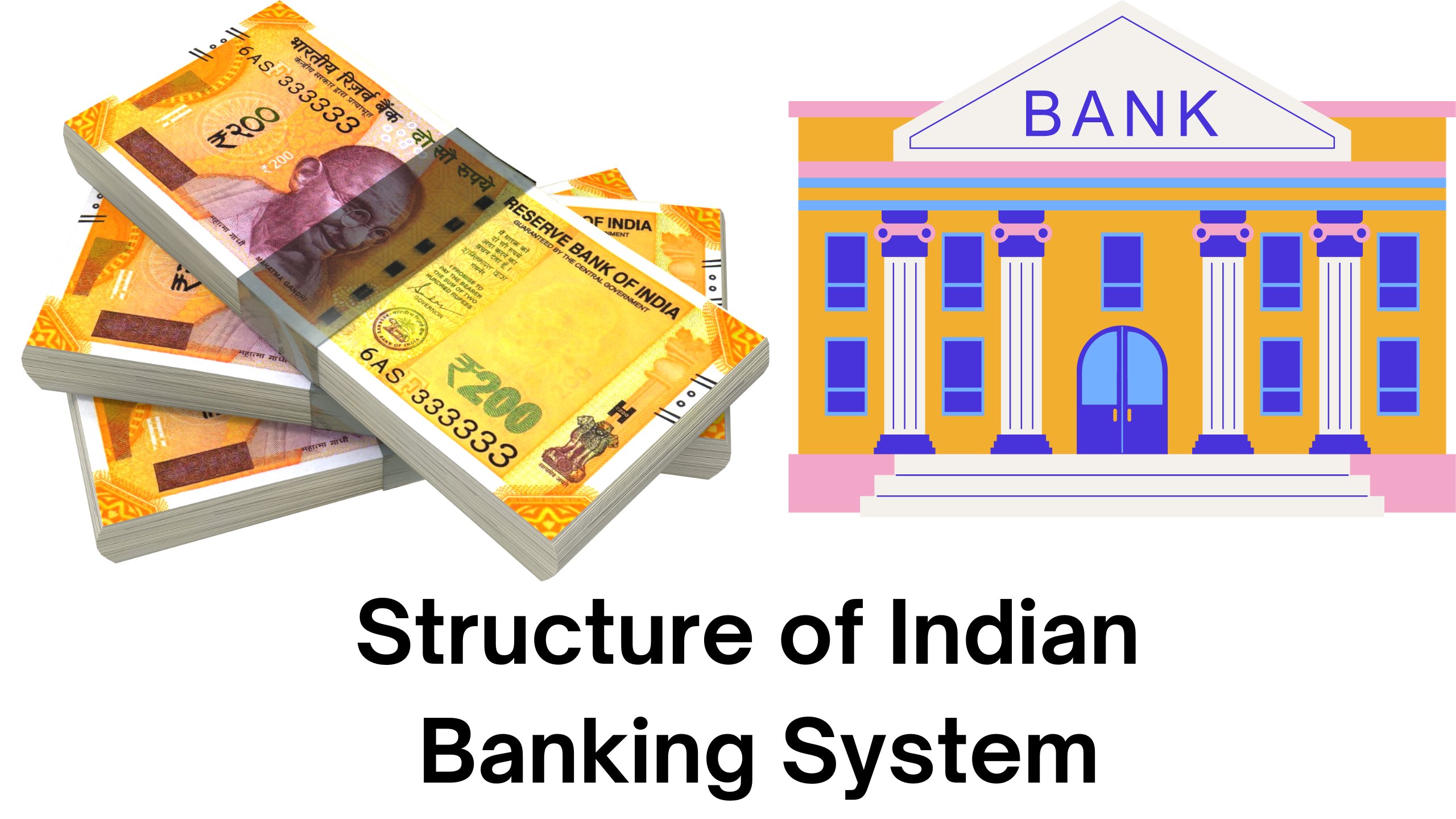Exploring Structure of Indian Banking System: From Commercial Banks to the Indian Banking System
Introduction
India, recognized as one of the globe's fastest-growing economies, boasts a dynamic banking structure that has undergone substantial transformations over the years. The financial sector plays a pivotal role in India's economic framework, hosting numerous commercial banks and financial institutions within its borders. This article delves into a comprehensive examination of India's banking structure, ranging from commercial banks to the broader Indian banking system.
Banking Structure of India:
India's banking structure is segmented into three categories: Scheduled Commercial Banks (SCBs), Co-operative Banks, and Non-Banking Financial Companies (NBFCs). Further, SCBs are classified into public sector banks, private sector banks, and foreign banks.
You can find full IFSC codes HERE
Structure of Indian Banking System
The Indian banking system constitutes a intricate network of institutions offering financial services to customers. At its pinnacle, the Reserve Bank of India (RBI) stands as the regulatory authority overseeing and supervising the Indian banking system. The components of the Indian banking system include:
Reserve Bank of India (RBI) –
The RBI, a cornerstone of India's banking structure, operates autonomously as the central bank. Its primary mandate is to ensure financial stability, acting as a regulatory body formulating impactful monetary policies. Key facets of the RBI's structure and functions include:
Establishment on April 1, 1935, headquartered in Mumbai.
Governance by a central board of directors appointed by the government.
Formulation of policies related to currency, credit, and monetary management.
Management of India's vast foreign exchange reserves.
Regulation and supervision of all commercial banks, including foreign banks, co-operative banks, and NBFCs.
Functioning as the government's banker, managing the borrowing program.
Issuance of currency notes and coins with a commitment to integrity and security.
Crucial role in maintaining financial stability by monitoring the economic environment, controlling inflation, and promoting digital payments.
Promotion of financial inclusion by providing banking services to underserved areas.

Scheduled Commercial Banks (SCBs) –
Integral to the Indian banking system, SCBs operate under the Banking Regulation Act, 1949. These banks, including public sector, private sector, and foreign banks, exhibit characteristics such as offering diverse banking services, maintaining specified reserve ratios, adhering to KYC norms, and undergoing regular inspection and supervision by the RBI.
Co-operative Banks –
Co-operative banks, crucial for catering to the banking needs of rural and semi-urban areas, operate on cooperative principles. Governed by the Co-operative Societies Act, these banks offer a spectrum of financial services, including deposits, loans, remittances, and insurance. Despite challenges, co-operative banks contribute significantly to financial inclusion and the rural economy.
Non-Banking Financial Companies (NBFCs) –
Regulated by the RBI under the Reserve Bank of India Act, 1934, NBFCs play a pivotal role in addressing the financial needs of underserved segments. Offering flexibility in lending norms, these companies focus on specific areas like microfinance, agriculture, or housing finance, contributing significantly to economic growth.
Structure of Commercial Banks in India:
Licensed under the Banking Regulation Act, 1949, commercial banks in India are categorized into public sector, private sector, and foreign banks, each playing a distinctive role in the Indian banking system.
Conclusion
In conclusion, the Reserve Bank of India stands as the cornerstone of the Indian banking system. Its multifaceted roles encompass monetary stability, currency management, foreign exchange oversight, financial regulation, economic development, and more. The symbiotic relationship between RBI and the financial landscape ensures a robust and resilient economy.
Frequently Asked Questions (FAQs) on the Structure of Indian Banking System :
What is the Reserve Bank of India (RBI)?
The RBI is India's central bank, overseeing monetary policy, regulating the banking system, and ensuring financial stability.
What are Scheduled Commercial Banks (SCBs)?
SCBs, licensed under the Banking Regulation Act, 1949, encompass public sector, private sector, and foreign banks.
What are Co-operative Banks?
Co-operative Banks, governed by the Co-operative Societies Act, operate on a cooperative basis, serving rural and semi-urban areas.
What are Non-Banking Financial Companies (NBFCs)?
NBFCs are entities regulated by the RBI, providing financial services without holding a banking license.
What is the structure of commercial banks in India?
Commercial banks, licensed under the Banking Regulation Act, 1949, are classified into public sector, private sector, and foreign banks. Public sector banks are government-owned, private sector banks are privately managed, and foreign banks operate in India with overseas headquarters.
You can find full IFSC codes HERE